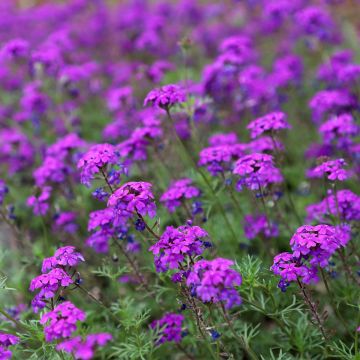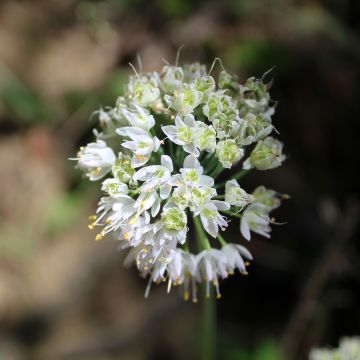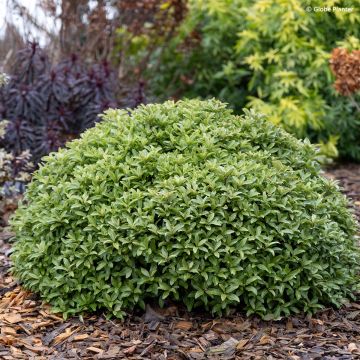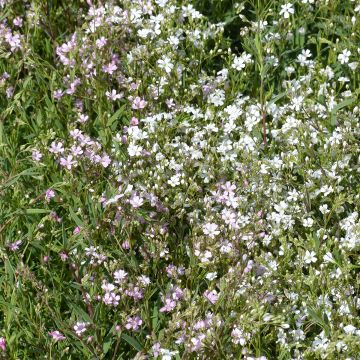
Rose bushes in turf pouches or bare roots
When and how to plant them?
Contents
With their romantic and very delicate flowering, roses are among the most cherished plants for enhancing gardens. There is an infinite variety, enchanting us with their single or double flowers, pastel or more pronounced shades, and their intoxicating or subtle fragrance… They can be sold in pots, but also bare root (or in turf packets: the roots are protected by turf to prevent them from drying out). They are marketed as bare root from November to March, when they are in a dormant state. This packaging has the advantage of being more economical (the rose will cost much less) and promotes rapid and deep rooting. To ensure your bare root rose establishes well, discover all our tips on when, where, and how to plant it!
When to plant a rose in naked roots?
Roses sold as bare-root or in turf pouches are generally lifted in October to be available for sale. The best time to plant them is from November to the end of March, during the dormant season. It is important to choose a time when the soil is neither frozen nor waterlogged. Avoid periods of severe frost or extreme cold, which can compromise the recovery of the young plants.
If you cannot plant them immediately, it is possible to heel them in. To do this, dig a furrow 30 cm deep in a shaded and sheltered spot from the wind. Place the roses in at an angle and cover them with soil, ensuring that the roots are well filled in to avoid air pockets. Water lightly if the soil is dry. They can wait for 3 to 4 days before their final planting.
Read also
When and how to heel in before planting?Where to plant your rose?
Roses thrive in a sunny location, sheltered from strong winds, to encourage their flowering and development. The ideal is to plant them in rich, well-drained soil that is slightly acidic to neutral. Avoid areas where water stagnates, as the roots of roses do not like excess moisture. If the soil is too heavy or clayey, you can lighten it with coarse sand or compost to improve drainage. Finally, space your young plants at least 50 cm to 1 m apart, depending on the variety, to give them enough room to fully flourish.
Discover other Bare root Roses
View all →Available in 0 sizes
Available in 1 sizes
Available in 1 sizes
Available in 1 sizes
Available in 1 sizes
Available in 1 sizes
Available in 1 sizes
Available in 1 sizes
Available in 2 sizes
Available in 1 sizes
How to plant a rose bush with naked roots?
To plant a bare-root rose, follow these steps:
- Work your soil to a depth of about 40 cm and a width of 30 cm to aerate it well. Loosen the soil by crumbling it finely and add an organic amendment such as ground horn or dried blood at the bottom of the hole, rich in nutrients to promote recovery. Then form a small mound of soil at the bottom of the hole to place the roots on.
- Next, proceed with the mud preparation: prepare a thick mud mixture by mixing soil and water. Carefully unpack your rose, then unfold the roots if they are folded in the packaging. Dip them in the bucket of mud to coat them well. This process helps protect the roots and improves recovery.
- Place the rose in the planting hole by spreading the roots over the mound of soil you formed. Check the depth: the grafting point (the place where the branches meet on the trunk) should be slightly above the soil.
- Gradually fill the hole with the removed soil, gently compacting it as you go to surround the roots properly without leaving air pockets. Be careful not to bury the grafting point.
- If necessary, prune the branches of your rose to about 15 to 20 cm in height to encourage recovery and good branching.
- Form a basin around the base of your rose to direct water towards the roots, then water generously. This allows the soil to adhere properly to the roots and eliminates air pockets.
- In regions with harsh winters, you can protect your roses by spreading mulch around the base to a height of about 20 cm. Dead leaves, straw, or compost can be used to insulate the roots from the cold.
How to care for your rose bush?
Watering
Roses need regular watering, especially in the first year and during dry periods. Water them at the base, avoiding wetting the leaves to prevent diseases, and prefer watering in the morning or late in the day. Ensure the soil remains slightly moist, but not overly so.
We recommend placing a layer of organic mulch at the base of your roses (straw, bark, dead leaves, etc.), as this will help keep the soil cool for longer, in addition to limiting the growth of weeds and protecting the roots from temperature fluctuations.
Fertilisation
Enrich the soil in spring by adding compost or a special rose fertiliser, rich in potash, to promote flowering. A fertiliser application can also be made after the first flowering to support the development of new blooms.
Pruning
- In August: Prune roses that do not reflower (non-perpetual) to prepare them for the following year.
- In autumn (just after the first frosts): Perform light pruning on roses that have just flowered, particularly to remove faded flowers and balance the plant. You can also carry out maintenance pruning: remove old wood and dead branches, as well as those that cross or clutter the centre of the plant, to aerate it and prevent diseases. Keep 3 to 7 vigorous young branches to structure the rose.
- In February/March: The main pruning is done at the end of winter, before the start of growth, when the risk of severe frosts has passed. Prune young branches severely, leaving only 3 to 5 eyes per stem. This pruning stimulates the production of new shoots and encourages a more generous flowering. The cut should be made at an angle, just above an eye facing outward to promote harmonious growth.
Do not prune dwarf roses before they are 3 or 4 years old. Pruning too early could compromise their development.
In the case of climbing roses, prune faded flowers during the flowering period to encourage new blooms. After flowering, remove dead or weak branches. To keep the climbing rose within the allocated space, carry out training pruning while ensuring to properly tie the main branches to their support.
Discover our advice sheet to learn everything about pruning roses.
Diseases and Pests
Roses are sometimes subject to diseases such as powdery mildew or rust, as well as pests like aphids. Regularly monitor the foliage and intervene quickly with appropriate treatments, preferably organic ones like black soap or Bordeaux mixture. Remove diseased leaves to prevent their spread.
For more information, consult our advice sheet on rose diseases.
- Subscribe!
- Contents








































